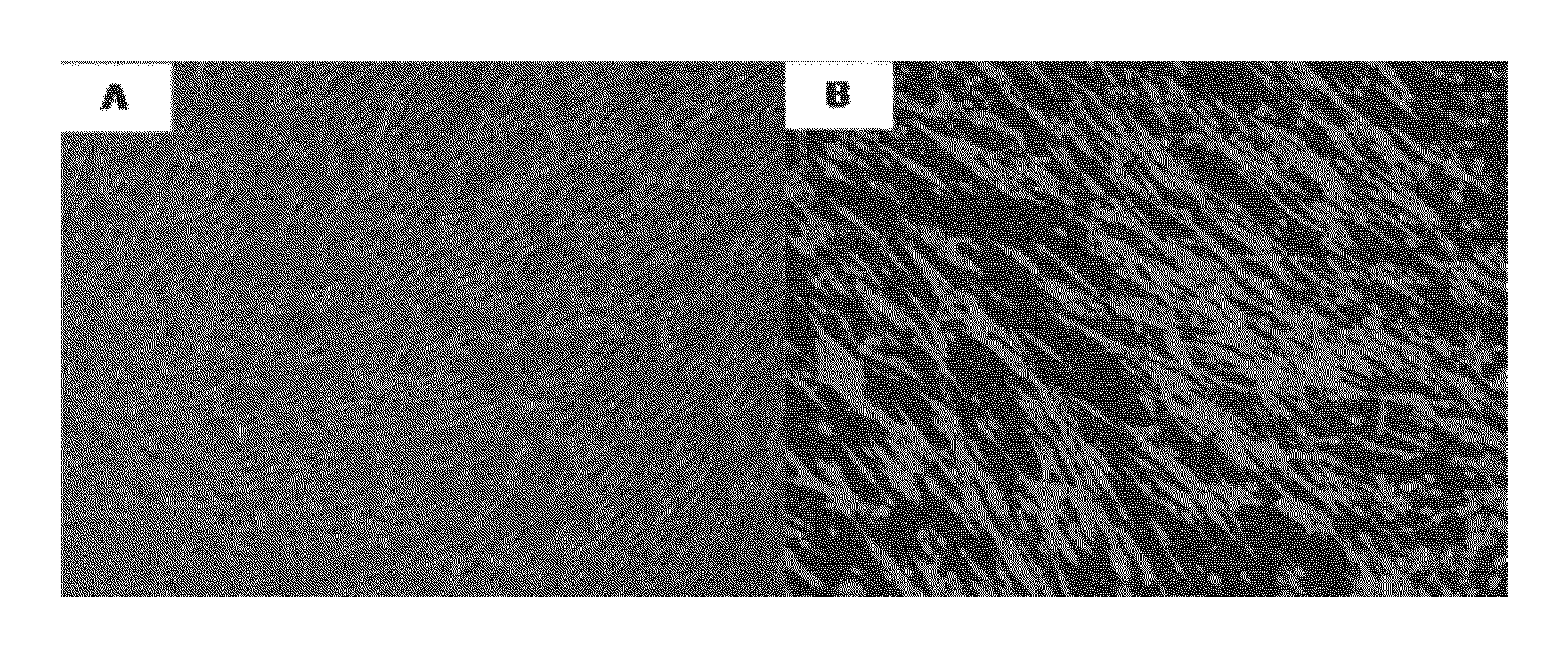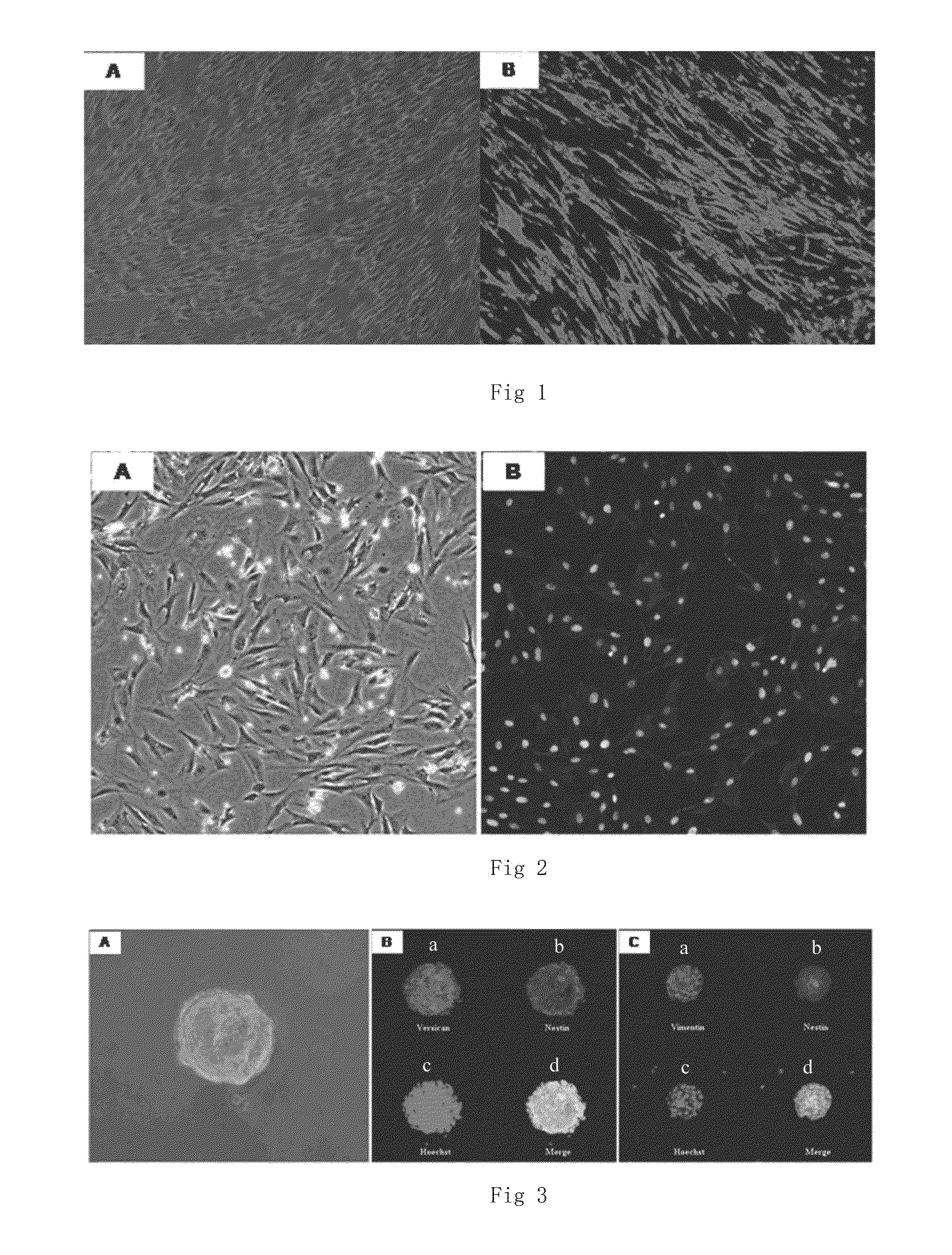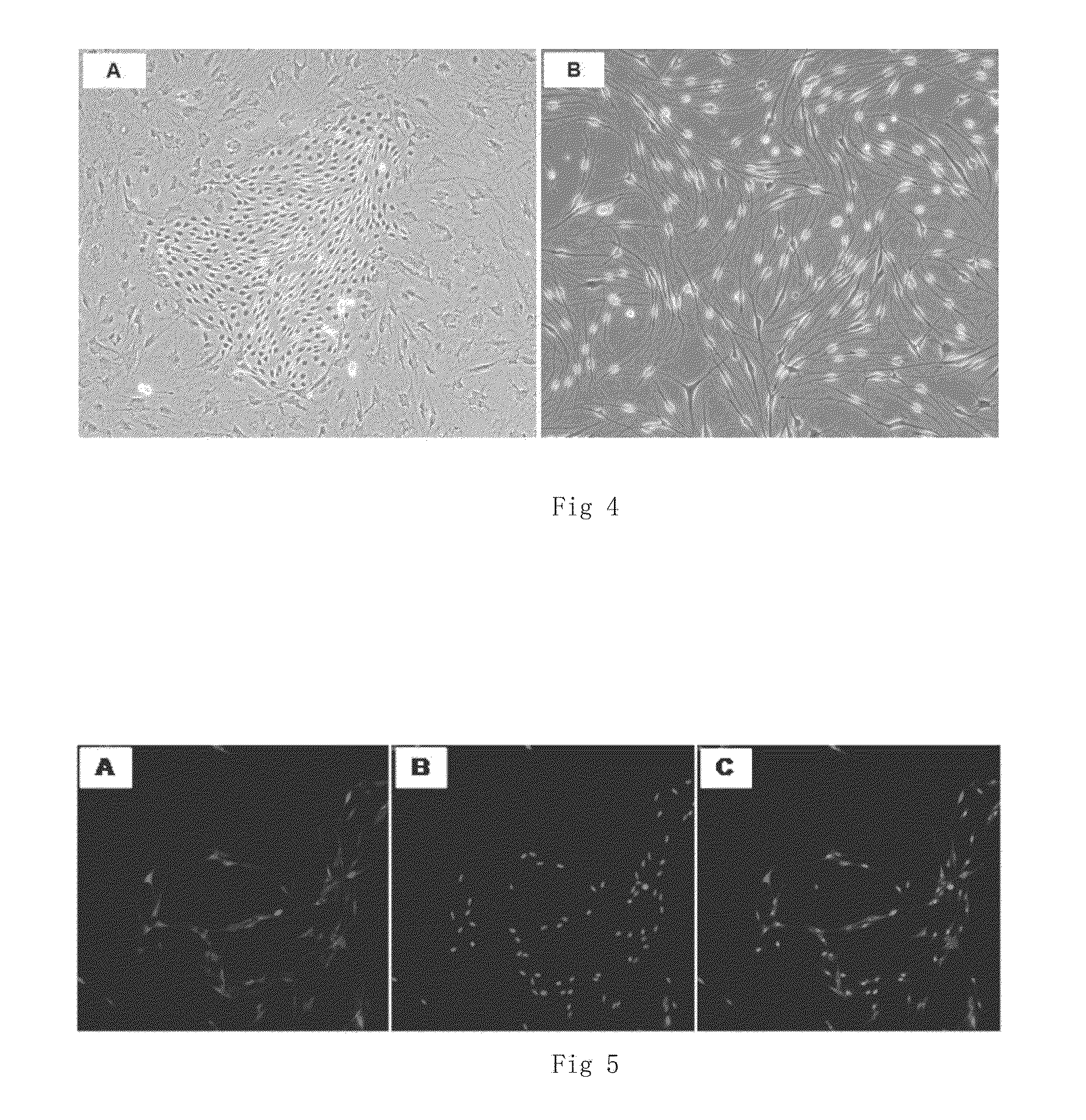Preparation of extracellular matrix-modified tissue engineered nerve grafts for peripheral nerve injury repair
- Summary
- Abstract
- Description
- Claims
- Application Information
AI Technical Summary
Benefits of technology
Problems solved by technology
Method used
Image
Examples
working example 2
Culture of Skin-Derived Fibroblastes
[0061]Newborn SD rats (1 day old) are killed and disinfected with alcohol Skins in the back are taken out and placed in a pre-cooled dissection solution to remove subcutaneous tissue (fat, hypodermic fascia layer, and blood vessels). After wash thrice with PBS, the skins are cut into pieces (<1 mm×1 mm) using a surgical blade knife, and completely digested using I type collagenase (1 mg / ml). The supernatant is abandoned. The cells are resuspended through a complete medium and seeded to a culture dish. After 90% cells are fused, the cells are subcultured. Epithelium contamination may occur during the process of primary culture, and most of parenchyma cells (epithelial and endothelial cells) will die gradually after several subculture. Therefore, the cells used in embodiments of the present invention are cells that have been subcultured for more than three generations (cell culture and identification are as shown in FIG. 2).
working example 3
Culture of Skin Stem Cells and Directional Differentiation Toward Schwann Cells
[0062]This is conducted as previously described (Jeffrey A Biernaskie, Ian A McKenzie, Jean G Toma & Freda D Miller, Skin-derived precursors (SKPs) and differentiation and enrichment of their Schwann cell progeny NATURE PROTOCOLS, 2006(1): 2803-2812). In brief, newborn SD rats (1 day old) are killed and disinfected with alcohol Skins in the back are taken out and placed in a pre-cooled dissection solution to remove subcutaneous tissue (fat, hypodermic fascia layer, and blood vessels). After wash thrice with PBS, the skins are cut into pieces (<1 mm×1 mm) using a surgical blade knife, and completely digested 0.1% pancreatin or XI type collagenase (1 mg / ml) for 45-60 min at 37° C., and then the digestion is terminated via a complete medium. The centrifugation is conducted and the supernatant is abandoned. Suspension culture is conducted in DMEM / F12 (3:1) containing 0.1% secondary antibody, 40 μg / ml fungizon...
working example 4
Culture of Bone Marrow Mesenchymal Stem Cells
[0064]Adult SD rats are killed by dislocation, soaked for 5 min with 75% alcohol. Femur and fetal bone are taken at an aseptic condition, and the marrow cavities are exposed and flushed by IMDM basal culture solution to collect the bone marrow. The bone marrow obtained is repeatedly pumped with an injector and prepared into a single-cell suspension, which is filtered through a 200-mesh sieve, placed in a horizontal centrifuge for centrifugation (1000 rpm×5 min). After the supernatant is abandoned, The cells are seeded at a density of 4×105 / cm2 to an IMDM complete culture solution (containing 10% fetal calf serum) for culture. Full-dose solution change is conducted after 24 h, and the cells not adhered to the wall are removed. Afterwards, half-dose solution change is conducted every 3 d. The cell modality and growth situation are daily observed under an inverted microscope. When the cells overspread the bottom of the culture dish and are f...
PUM
| Property | Measurement | Unit |
|---|---|---|
| Temperature | aaaaa | aaaaa |
| Temperature | aaaaa | aaaaa |
| Time | aaaaa | aaaaa |
Abstract
Description
Claims
Application Information
 Login to View More
Login to View More - R&D
- Intellectual Property
- Life Sciences
- Materials
- Tech Scout
- Unparalleled Data Quality
- Higher Quality Content
- 60% Fewer Hallucinations
Browse by: Latest US Patents, China's latest patents, Technical Efficacy Thesaurus, Application Domain, Technology Topic, Popular Technical Reports.
© 2025 PatSnap. All rights reserved.Legal|Privacy policy|Modern Slavery Act Transparency Statement|Sitemap|About US| Contact US: help@patsnap.com



